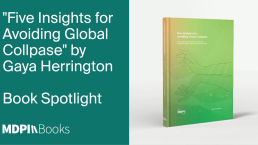
Peer Review in Open Access Book Publishing
Peer review is an integral part of academic publishing. In open access journal publishing, peer review is a process that assesses the validity and originality of research. Although peer review in open access book publishing aims to do the same but with books instead of journals, the process is a lot more complex.
In this article, we’ll look deeper at the specifics of peer review in open access book publishing.
What is peer review?
The origins of external systemic reviewing and subsequently what we came to term ‘peer review’ can be traced back to the 19th century. This was a period when academic journals and the analytically rigorous theories they advanced became the dominant form of scientific communication in the public sphere. The need for consensus and intellectual validation among scientists naturally grew within this context.
Over time, “reputable” journals were established, such as the Philosophical Transactions of the Royal Society. Journals like these became the main route by which an author aimed to publish and validate their scientific research.
Validation of the research for journals such as Philosophical Transactions was performed by a small body of referees. However, some of the most influential and seemingly reputable journals from this period didn’t use peer review at all.
The practice of peer review is now much more established than it was in the 19th century. In its current form, peer review typically involves independent experts, usually scholars or researchers with expertise in the relevant field, evaluating the submitted work to assess its suitability for publication in academic journals.
But how does peer review operate specifically within open access book publishing?
Peer review in open access book publishing
With the open access revolution in the early 21st century, the shift towards making research published in academic journals freely accessible began.
This shift has been slower to observe with books. Despite open access journal publishing being a well-established model, open access book publishing is still developing. This means that there are fewer established norms within this publishing model currently.
A key difference is that peer review for open access books is less standardised compared to journal articles. This is arguably because of the more complex nature of open access book publishing. Let’s look at the specifics and challenges of peer review in open access book publishing that contribute to this complexity.
Diversity of open access books
Open access books come in various forms and formats, each with distinct structures and review needs. The diversity of books makes it challenging to apply a uniform review process, especially in certain disciplines and for certain types of books.
As well as the diversity of content, the length of open access books poses a problem too. Books are an ongoing process. Peer review typically takes longer and is more demanding for reviewers compared to journal article review. Books published by MDPI Books are usually 150–300 pages in length, making them almost 10–20 times longer than your average journal article. This distinction means that thorough evaluation and detailed feedback are required from reviewers.
Size of reviewer pool
MDPI produces many journal articles, meaning it must have a large pool of reviewers to meet publication demands.
Due to the pace of open access book publishing, the volume of book publications is much lower than journal articles. This means that MDPI Books does not have a large pool of active reviewers compared to MDPI journals.
Open access books are aimed at a more general audience
Books often do not have the same audience as those for journal articles. Whereas journal articles often cater to audiences of niche fields using specialist knowledge, books are intended for a more general audience.
Books usually provide reflections on existing research, historical overviews, or theoretical syntheses. These works are more about integrating and interpreting existing knowledge rather than offering new empirical data or discoveries.
This raises questions about the appropriateness and necessity of the traditional peer review for books that is designed to validate the rigor, originality, and significance of new research findings.
The importance of peer review for MDPI Books
Peer review is an essential part of the publication process and ensures that we maintain the highest quality standards for our publications.
For our monographs, we aim to have two reviewers assess the entire manuscript. In cases where their reports significantly differ, we invite a third reviewer to provide an additional perspective.
For edited books, we can invite reviewers for each individual chapter. However, since books are cohesive and comprehensive works, it’s also essential to have a volume reviewer. This reviewer evaluates the overall structure of the book, ensuring that it presents a diverse range of perspectives on the topic and maintains a coherent narrative throughout. Ideally, we envision a combination of both chapter-specific reviewers and a volume reviewer for our edited books.
Peer review in open access book publishing and here at MDPI Books has many important uses. So, what are some of the main benefits of the peer review model for books?
- Provides reassurance to publishers – peer reviewers involved in the assessment of a book’s validity and originality provide reassurance to publishers. Their expertise and familiarity with the book’s subject matter means that they can advise and guide the editorial team of a publisher – often small and not academic experts – on the suitability of the research.
- Emphasises quality control to authors – the peer review model for books also reassures authors that rigorous quality control is being implemented, confirming the integrity of a publisher.
- Provides an objective critique – authors can spend a lot of time writing their book. This means that it can be hard to maintain a critical distance from the research. A round of peer review may reveal some blindspots in an author’s theory or argument, enabling them to address any issues of coherence. Ultimately, it’s a great opportunity for an author to reflect on the scope and emphasis of their book.
- Helps a publisher market the book – during the peer review process, the reviewers will provide suggestions concerning the audience for the book. This in turn helps publishers categorise a book and plan marketing strategies accordingly.
Peer review is clearly an essential process for improving and orienting a book project. But the model is by no means perfect, especially for open access book publishing, which is continuously evolving. What, then, are some ways we can advance peer review for books?
Alternatives or complements to traditional peer review for books
There are other ways we can advance peer review for books. One method would be to establish an advisory board of experts who support the content development and ensure its accuracy and relevance. This is something that MDPI Books is actively focusing on developing.
Another way to complement peer review for books would be to prioritise book reviewer incentives and recognition. This could be achieved by giving book reviewers a means to showcase their reviewing history and experience. Publons is a website that allows academics to share their peer review and academic contributions. However, it currently only hosts information about contributions to academic journals.
The reason for this is that open access – and by extension peer review – for books is still evolving. If academics could use Publons to share details of book reviews they’d completed, this would be beneficial for their career prospects and academic track record. This in turn would create long-term incentive that goes beyond short-term financial reward.
The future of peer review for books
Although the goal of academic validation lies at the heart of each, open access book publishing and open access journal publishing are two very different models. This means that the problems we encounter for each model are unique in nature, with no universal solution.
What we do know is that peer review for books is a lengthier process and can have a significant impact on the scope and emphasis of a project. It’s crucial that the peer review model for books recognises that influence by giving reviewers short-term and long-term incentives.
Crucially, peer review for books should not be seen as simply some external process that a book must proceed through. Academics often work in collaboration with others to develop their concepts and arguments, and peer review for books is a natural extension of that process. It’s an opportunity for a book to develop in ways previously unknown to both the author and publisher.
Want to learn more about peer review for books? Check out our FAQ for more information.









